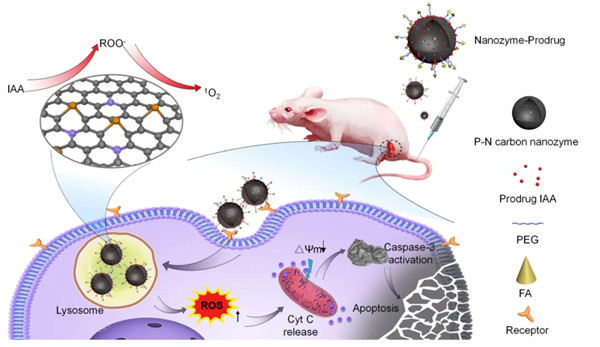Home> News
Chinese research team reports new nanozyme-activated prodrug strategy for targeted tumor catalytic therapy
Updated: 2020-08-14

Schematic illustration of the metal-free nanozyme-activated prodrug strategy for targeted tumor catalytic therapy. [Photo/WeChat account of BSC]
Recently, a research paper entitled A Metal-Free Nanozyme-Activated Prodrug Strategy for Targeted Tumor Catalytic Therapy -- published in UK-based international quarterly journal Nano Today -- reported a Chinese research team's novel approach in nanozyme-activated prodrug strategy for targeted tumor catalytic therapy, according to an Aug 13 article in the public WeChat account of the Biophysical Society of China (BSC).
The research team -- led by academician Yan Xiyun, from Institute of Biophysics in the Chinese Academy of Sciences (CAS) -- developed a metals-free phosphorous and nitrogen dual-doped porous hollow carbon sphere nanozyme (PNCNzyme) with robust peroxidase-like activity in an acidic environment.
Based on this metal-free nanozyme, the team developed a nanozyme-IAA activation strategy that activated IAA to produce abundant ROS and trigger tumor cell apoptosis.
Researchers in the team also introduced folate (FA) into the nanozyme to enhance its tumor targeting and endocytosis efficacy by tumor cells. Upon being administrated to mice, the FA-PNCNzymes@IAA effectively accumulated in the xenografts derived from cervical cancer cells, catalyzed the production of ROS and induced apoptosis.
Taken together, research data demonstrated that the nanozyme-IAA combination is an effective enzyme-prodrug activation strategy for tumor-targeted catalytic therapy.
